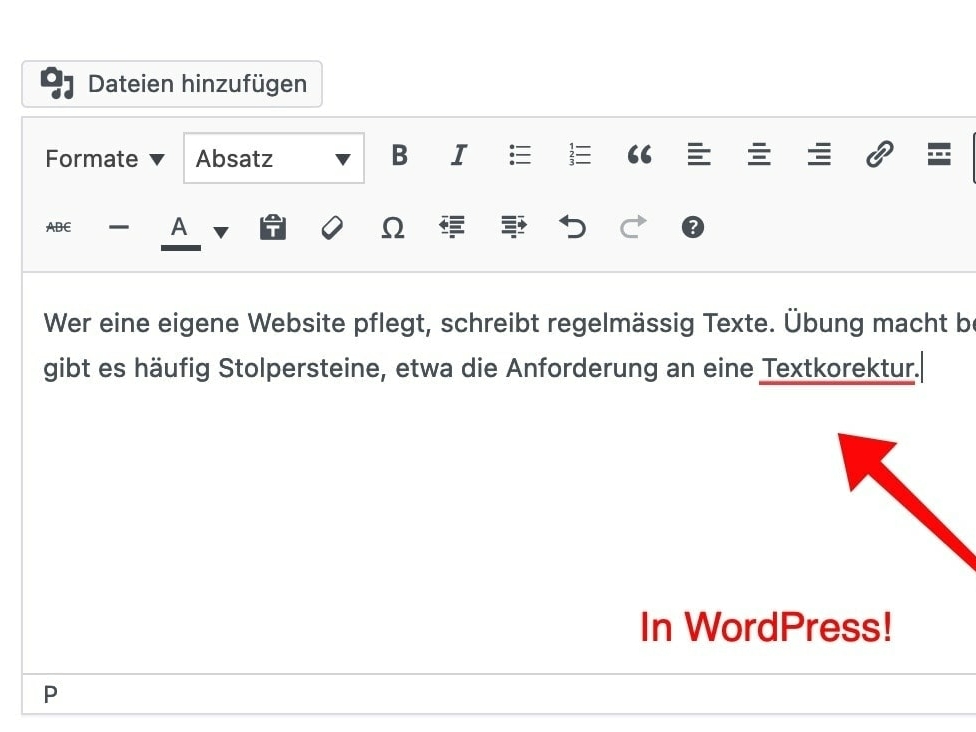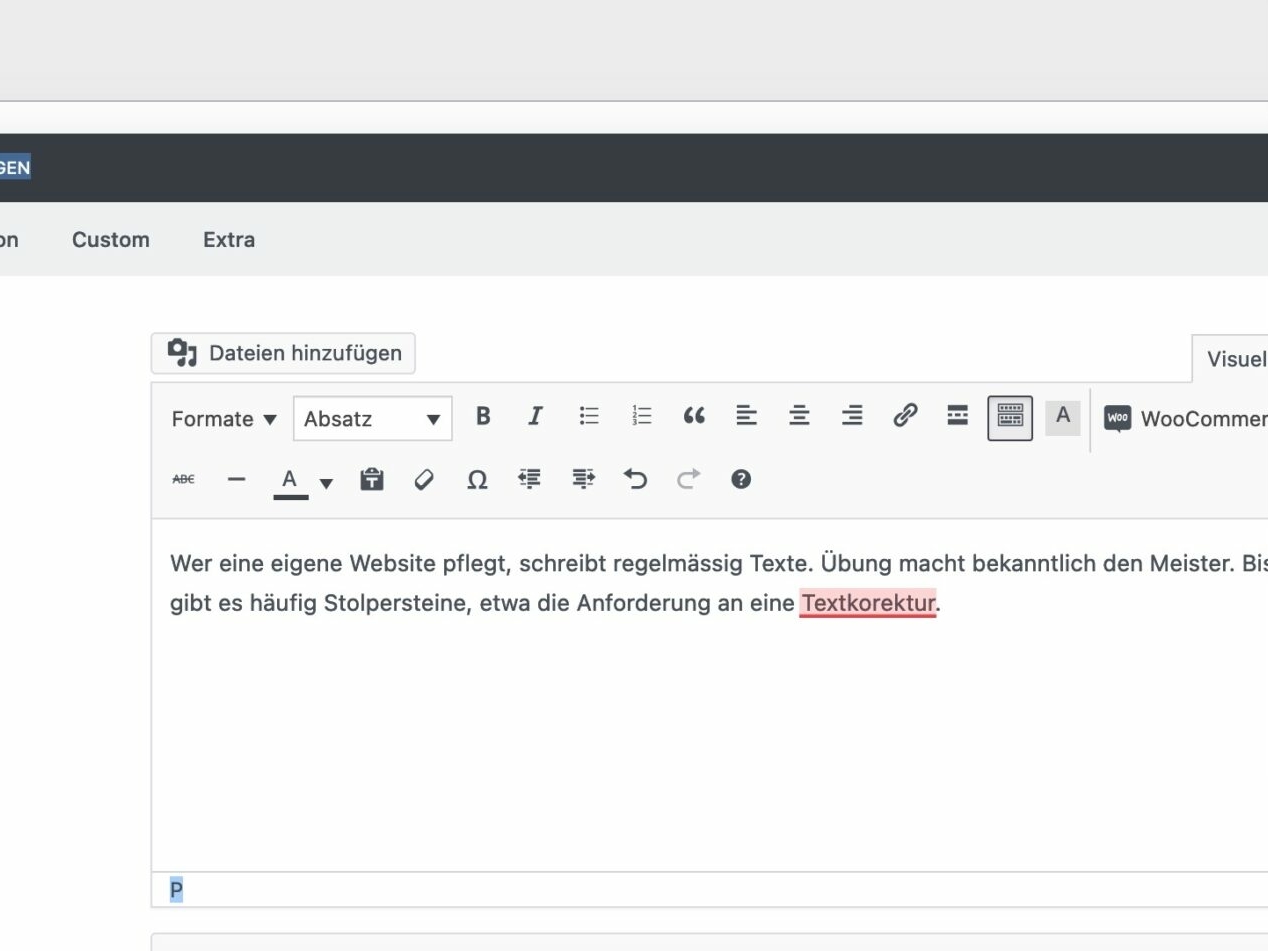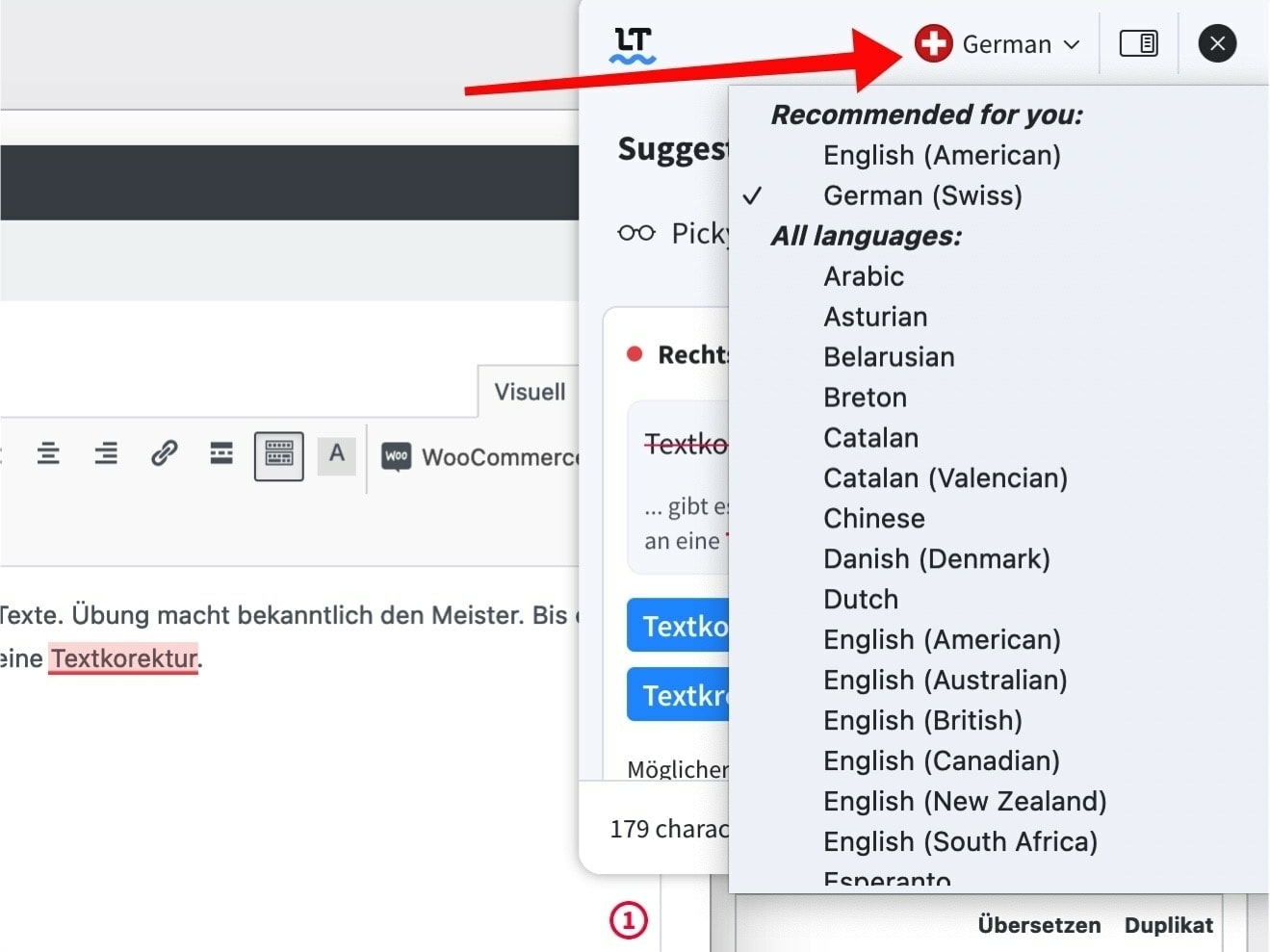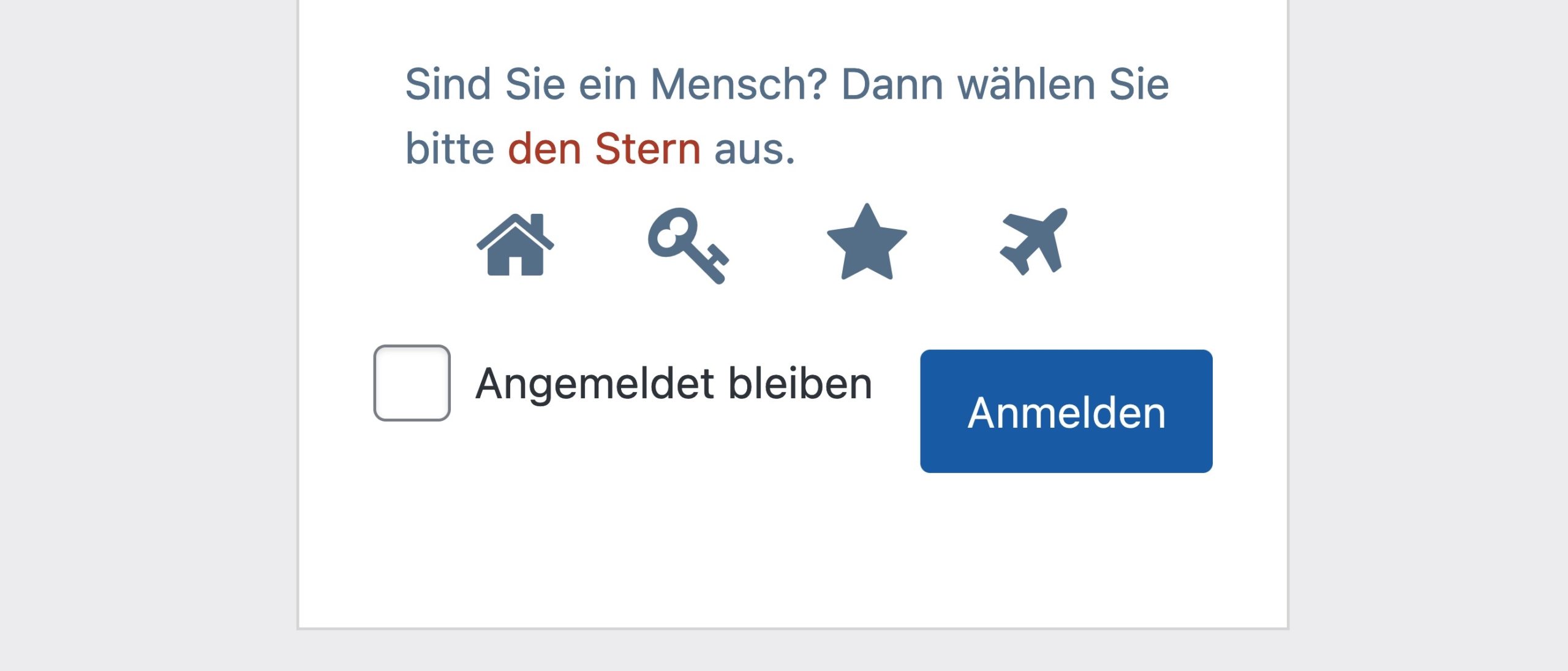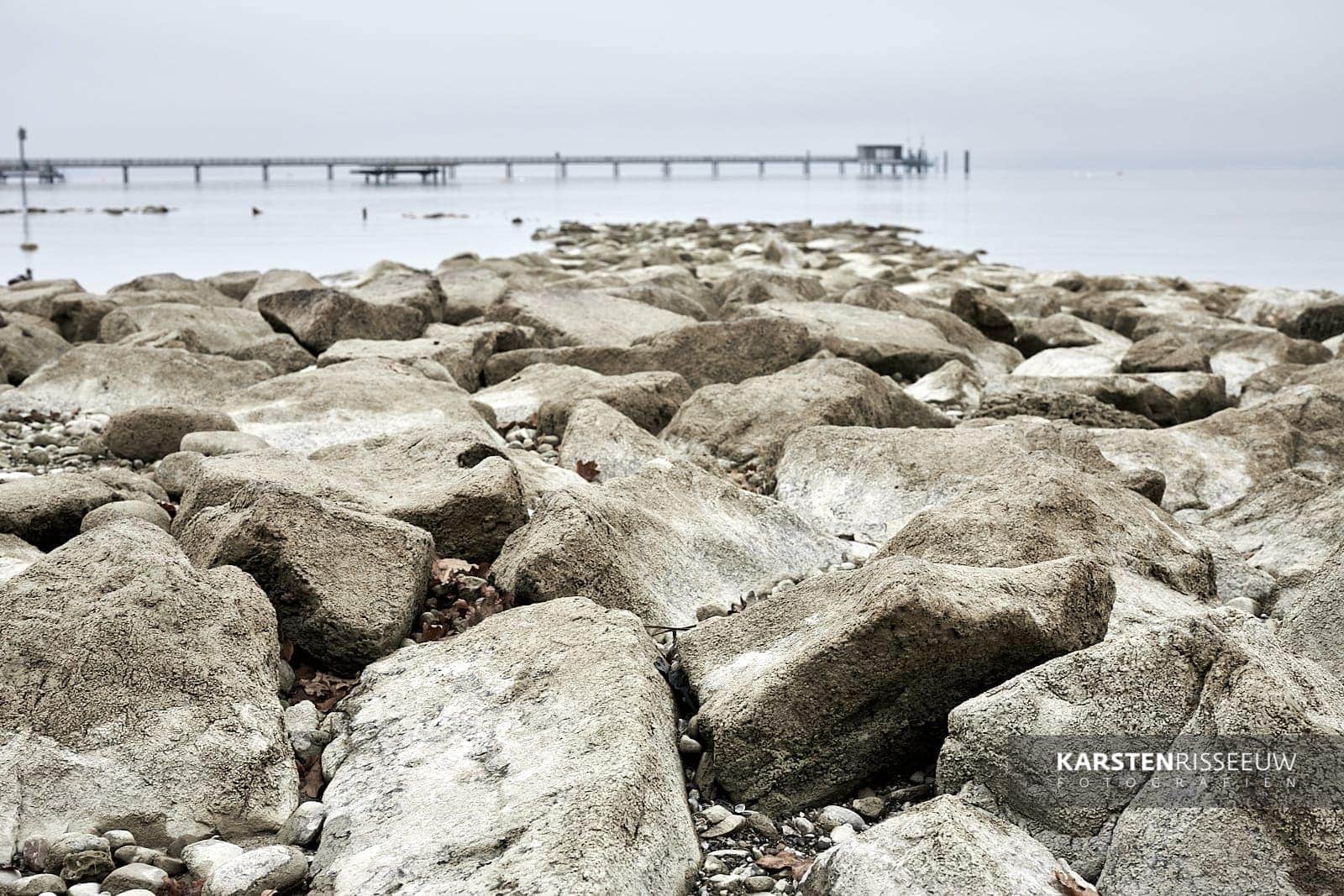Kursiv GmbH in liquidation
Kursiv GmbH in liquidation
Business closure and realignment
In 2023, Kursiv GmbH was put into liquidation for reasons of age. The last projects will be completed these months. All active clients have been informed. Effective immediately, no more products will be sold via this website. Markzware products can be purchased directly from > Markzware or from other resellers. I would like to thank you for many years of cordial and professional cooperation.
Now we are moving on to new horizons and activities. Work is already underway to realign this website for 2024.
Karsten Risseeuw
Simple steps to maintain your WordPress website
Simple steps to maintain your WordPress website
This is what matters when maintaining your website
In this post you will find helpful tips on how to keep your WordPress website up to date. Kursiv offers this as a service, but you can also do it yourself. Maintaining a WordPress website is simple. You just need to keep it up-to-date, secure and optimized. The decisive factor is regularity. How do you go about it and what should you look out for?
Strategic planning
After the initial euphoria about the new website, it is the website operator’s job to keep the website alive. What can you contribute yourself?
Perhaps the most important thing is to realize that not everything works “by itself.” Because it doesn’t, or only for a certain amount of time. It takes strategy and ongoing attention to keep a website up to date. Those who ignore this run the risk of losing their website.
Two things are important for a successful website:
- On the one hand, it is about publishing new articles on a regular basis. These show the visitor that your business or website theme is active. The website can be compared to a shop window, which must be periodically adjusted.
- On the other hand, it is also about the maintenance of the website. This post is specifically about maintaining your WordPress website and what it takes to do that. We offer this “maintenance as a service“, but anyone can do it themselves if they are willing to put in the time and learning effort. Here you will learn what you need to pay attention to.
Update of all components
Challenge: WordPress websites consist of many components and technologies. All these elements require care. One can think of further developments, adaptations to new operating systems, closing security gaps and the like. Question: How do I keep my website structure up-to-date?
Solution: Maintain regular updates. WordPress makes it especially easy to add updates and shows available updates directly. Because most websites work with a particularly large number of components (WordPress core, plug-ins, themes), you should check the website for new features and install them daily, or at least several times a week. Before each update, it is recommended to create a backup. An update can lead to incompatibilities between components in exceptional cases. It is important to remember that not every combination can be tested. So check your own website regularly.
Recommendation: Directly on the website itself or with a central solution like Updraft Central. The Easy Updates Manager plug-in is also helpful.
security
Challenge: The wide distribution of WordPress makes the platform attractive to hackers. Criminals try to gain access to websites. At the same time, the website itself is only a means to an end. People misuse the website to distribute malicious software, advertisements, or hijack the website so that it becomes part of a hacker network. Every website owner should be aware that websites are never 100% secure. Once the website is hacked, this can also indirectly harm one’s own company, for example by marking one’s own website out of “danger”. The following question should be asked: What are best practices to increase safety?
Solution: Installing and setting up a security plug-in. Regularly check settings and search for malicious software. Furthermore, regular backups are important.
Recommendation: iThemes Security.
Backups
Challenge: Websites are not unbreakable. It is a technical marvel, but that also makes it vulnerable. If one day a website stops working, one is glad to have a so-called “backup”, a copy of the website that may not be too old. Many hosting companies now have an automatic backup once a day. Additional security is provided by regular, approximately hourly backups to external servers.
Solution: Install and set up a backup solution. There are several plug-ins for WordPress that make this possible. Most of the time, they create a backup within the website. If you want to store this externally, it often requires paid solutions. It is worth investing in it, because such security is always cheaper than the long-term failure of the website.
Recommendation: Updraft Plus
Caching
Challenge: WordPress websites are built dynamically. In a web browser you always see HTML pages. This is the result of a complex process. Each page is built from different building blocks. This takes time, which slows down a website. The solution is called “caching”. The building blocks of each page are precalculated and already stored as HTML pages. When the website is accessed, these ready-made HTML pages are called, which is much faster.
Solution: Install and set up a caching solution. Some hosting companies have caching that can be turned on for websites. However, most websites require a plug-in. There are several ways to do this, which vary in how easy it is to set up, and not all of them are free.
Recommendation: WP Rocket
Image optimization
Challenge: Each image has a certain “weight” when a website is loaded. If you use large images, it makes a website slow. The question is: How can I get smaller files while maintaining the same image quality and size? There are, of course, various solutions for this. A minimum requirement is to set images to a standard dimension (like 1600px or 2000px on the longest side) even before uploading. This prevents you from uploading oversized images that have no place on the website. WordPress automatically creates different thumbnails and preview images from these original sizes after upload. In each case the best size is delivered automatically. However, if you want to optimize all these different image sizes, you can’t avoid a specialized solution.
Solution: There are several plug-ins that can optimize images.
Recommendation: ShortPixel
Summary
These are the central themes for a WordPress website. Of course, there are other topics or subtopics, depending on the requirements. Those who prioritize worldwide accessibility may want to deploy a CDN (Content Distribution Network). Those who struggle with incorrect user logins will find specialized solutions for this as well. Almost everywhere it is worth hiding the default login page of WordPress, possibly disabling certain features of WordPress. For many tasks there are also several solutions.
Every website owner deals with technology. You don’t have to do everything yourself, but as an owner you should at least have an understanding of some of the interrelationships. This makes it easier to decide whether you want to take charge of the tasks yourself or prefer to assign them to someone else.
Simple text corrections for your own website
Simple text corrections for your own website
Those who regularly write, benefit from specialized software solutions
How to improve texts for your own website? The short answer is: With specialized software solutions! This article is about tools that can be used to check, correct and edit your own texts in no time.
How to correct online texts
Today, there are quite a few websites that can process and optimize texts. Often these tools are designed for a specific language, such as Grammarly for English or Duden Mentor for German. I myself use Language Tool, a comprehensive solution for multiple languages, since I write in several languages.
How do these tools work? In the simplest form, one uses the website of the provider. Paste a text to the website, and it will be analyzed. Errors are highlighted and suggested corrections appear in the side column. This works well, but is not very practical for regular writers.
However, the better tools have extensions for the browser. This allows text corrections to be created directly where you write – for example, on your website. On your WordPress website, it is particularly easy to have any text checked.
Tips for offline texts
The tools mentioned are very handy, not only on websites. They also work great directly on your computer. That’s why a subscription to a professional solution can pay off. Not only browser plug-ins, but also office plug-ins or desktop apps support text correction in emails, letters, texts of all kinds.

The best solution is the one that you actively use. For a long time, I resisted specialized solutions because I thought they were complex. That was a misjudgment. I have come to realize that my writing improves significantly when I use these tools. Many providers offer a simple test option directly on the homepage. There you will get a prompt insight.
Note: I have tried all the tools mentioned and currently use a regular subscription to languagetool.org for all text tasks. I am not sponsored, just sharing my experience.
How do I keep my website up to date?
How do I keep my website up to date?
Practical tips for regular publications
The famous Gretchen question from Goethe’s Faust is: “Now tell me, how are you with religion?” Today, this question is also the epitome of questions that come straight to the core. The crucial question for websites is: “Now tell me, how are you with your website?”
What do I want to achieve?
It is not uncommon for a website to be created once, but then it gets silent and not much happens afterwards. It doesn’t have to be like that. In this post, I’ll share some thoughts on how to keep your website up-to-date with little effort. To do this, you have to ask yourself a few questions first.
If you have one or more websites, you have just as many shop windows for your own activities. Now it’s not unimportant where and how you create your shop window. You can set it up on a busy shopping street, in a side street or even in the backyard. Of course, every positioning has an effect on whether it is found, whether it is liked and whether it results in active, regular visitors or even customers.
Thus, it pays off to think a little about the goal of your website(s). Only after that, you can intentionally position the website. So, you can “have” a website, but it would be more effective to “consciously use” a website. An evaluation should help to find out what you want to achieve and what is needed for it. As a result of a conscious positioning, you actively use the website to achieve your own goals.
The evaluation
An evaluation is about asking as many questions as possible: What should be achieved? What is the goal? There is neither right nor wrong here. The only important thing is that you become aware of your own goals. Make a list, leave it a few days, and then correct it where you find it necessary.
In a second step, one should think about what you yourself can and want to contribute, and where you need help from others. What resources do I need? I would like to explain this with an example.
Imagine that you are enthusiastic about solving challenging problems, but having difficulty writing texts. You are familiar with your strengths, but also know your weaknesses. Perhaps you enjoy writing, but you don’t have the time. These considerations should reflect the reality of your situation. What you cannot or do not want to cover yourself may require the support of other people. This knowledge can relieve you and lead to real solutions.
Each task can be solved in different ways. Again, there is no right or wrong. More on this below. Here we can state two things for an initial situation:
- Goal: What do I want to achieve with my website?
- Resources: What can I contribute to this myself, and what am I still missing?
Understand the environment
You are now clear about what you want to achieve and whether you need further assistance. Details may not be clear yet, but an approximate direction is becoming apparent. Now it is a matter of keeping an eye on this direction and sketching a path from the current “ACTUAL” state to the desired “TARGET” state. This path becomes your strategy.
A broad marketing strategy considers many areas, such as an online presence, personal contacts and events, advertising material and many other things. The online presence is therefore only part of the possibilities. This post is all about this online presence.
At an online presence, one can think of the following:
- Website and information
- Interaction (email, inquiries, etc.)
- Social media.
Not everyone has to be present everywhere. The most important question, however, is: Where are my current and future customers? You may not have an internet affinity yourself, but your typical clientele is on social media every day. One should not infer the activities on one’s own, but rather, based on the customer, decide what is important. Of course, you always have to balance between goals and resources.
When working out a strategy, you want to realize the explicated goals through suitable channels. You include the environment in the strategic considerations. The website is central to this mix of possibilities. The website contains the contact details, where you can present your competence. Further activities, for example via social media and other possibilities, build on this specialist knowledge and information.
Actuality of the website
An up-to-date website is attractive. A website where nothing has changed for months – and maybe even years – becomes less attractive. There are many methods that you can use to keep a website up to date. Differentiate between:
- Visual adjustments
- Content adjustments
When making visual adjustments, you want to regularly update the appearance of the website, especially the homepage. If someone visits the website from time to time, the same things don’t always appear there, but you can see that “something has happened” since the last visit. That kindles curiosity to look at something. It doesn’t always have to be new things. You can also randomly fade in articles or images, for example from a certain series or category.
Changes to the content are about new contributions. Think of new posts, new images, new stories, new ways to interact, and the like. This is where the real value of a website grows. With a good and future-oriented website, content grows continually. This increases the value of the website. Over time, the website grows and offers the visitor an ever larger pool of answers and information.
Actuality is an important keyword. On the way to reach your goals, actuality is what allows your offer to flourish. A growing and current website creates trust with customers and gives an insight into your competence. Search engines also rate websites with good and up-to-date information higher than static websites. You yourself make a decisive contribution to the ranking of your website.
Once you have the actuality of your offer under control, the strategy can be expanded accordingly, for example with:
- Newsletters
- Activities on social media
- personal information to customers
- Press reports.
The plan
Now it’s getting practical! Make a plan. Summarize:
- target
- resources
- target group
- Where is my target group? How do I get there?
- What content do I have to create?
- Does accompanying measures (events, advertising, etc.)
Adapt this list to your situation. Not every website needs all of these things. A simple strategy can be formulated as follows: “Do good and talk about it”. Whether you talk about it, write about it, create videos or hold interviews is secondary. Let readers of the website participate in the achievements, solutions, and experiences. This is how you win.
Marketing: Do good and talk about it.
Expertise is important. However, people are often emotional. The reporting is not only about facts, but also about liveliness, reliability, diversity. Example: A mattress salesman has learned to sell a good night’s sleep more than the mattress that makes it possible.
Having a website doesn’t make you “technical”. Anyone who can maintain their website gains “independence” and “freedom”. A website can be used to communicate, to reach people, to win customers, to inspire readers, to convey competence, to awaken zest for life. These are the important terms with which goals can be implemented. Your customers are not enthusiastic about your desire for more sales, but they are enthusiastic about reliable partners who, for example, solve problems competently, offer unique experiences or who help them to develop their personal competence. Keep your focus on the customer. Whatever it is you offer, you can do something your customers can’t. Make it an experience – on your website.
How can the plan be implemented?
the next steps
The rough plan is in place. In what timeframe do you want to implement the plan? Now it’s time to take the next steps towards fulfilling the plan. Although this seems cumbersome, it is often nothing more than a few good ideas that you don’t want to achieve all at the same time, but rather one after the other. That makes the job easier.
Plan + steps = strategy.
Imagine a simple scenario. You have a personal website that you want to make more attractive over the next 12 months. The goal would be more sales. You want to do this yourself and not rely on other services. You want to expand the website, and you have found that your competence and experience make up the core value of your offerings. You want to highlight these strengths. How do you do that?
Option A:
- Regular posts keep your website up-to-date
- You don’t like to write, but you like to explain things in a personal conversation
- You can show this with videos
- You are planning a short conversation with an employee or customer every month (video)
- Every month you publish a video with a few lines of text on a specific topic.
Variation B:
- Regular contributions keep your site up-to-date
- You would like to give brief insights into your work
- You want to answer typical questions from customers
- You are planning a short text with a photo as a post every month
- You create a question-and-answer (FAQ) page
Variant C:
- You are short on time, so you plan for those times when you have less to do
- During these times, you write multiple articles, of which the publication dates will be staggered. This way, you can plan the publications months in advance.
These are just a few of the options. It is only important that you find your style that supports you to achieve your goals.
Finding topics
Here are a few tips on how to find suitable topics for your planning:
- Make a list of titles:
- What questions do the readers of your website have? What does them bring to you?
- What questions do customers have before buying? After the purchase?
- Can you give an insight into successful projects?
- Provide insight into your career
- Introduce employees
- Do you know any tips and tricks that will help your readers?
- Which specialty sets you apart from the competition?
- Plan a minimum of 6 titles
- Reserve time on your calendar. Plan the publications over the year.
- How much time do you need for photos, audio, video, production, texts?
- Stick to the plan
- Celebrate each contribution as a milestone
- After a year, your website has increased significantly in value.
With every step you get closer to your goals.
Contact
Have I piqued your interest? Can I help you to evaluate a possible strategy for your website?
How do you write better texts for your website?
How do you write better texts for your website?
Who writes wins.
Write! Do good and talk about it. That is the essence of marketing. It is also the key to a successful website.
Website as a shop window
You have a shop window, which is your website. Like a shop window in the city, you want people to stop and linger for a moment. What do you offer? What can be of interest to passers-by? Was it skillfully staged? These questions can also be transferred to your own website.
In this post I summarize some experiences that I have tried on several websites for many years. The summary is: Make people happy by writing What I mean by that, I’ll try to clarify below.
Actuality on the Internet
Whoever writes wins! This statement may be a bit provocative for some. Not everyone likes to write. What is meant is not the writing itself, but rather the current message. Nowhere it is about the length of a contribution or particularly high-quality texts. It is nice when there is. However, it is more important that it is up to date.
If you have a website, think of it as a shop window. You would have to maintain this window regularly. The same goes for your website.
A website receives a better ranking by search engines if it shows relevant and up-to-date information. Do good and talk about it! Write answers to simple questions so that people with questions can find you. Provide insight into your work so that existing customers can feel it. Tell stories so that complex contexts become clearer.
You can gain up-to-dateness from regular information. Each contribution is an addition to the website. Your website will become more valuable over time.
The relevance does not always lie in the technology, in new products or in cheap prices. For many customers, these are often at the end of their interest (even if it is your daily business). People are looking for solutions to current questions or challenges. These questions and challenges deserve attention. There is huge potential here for good communication.
Better than advertising and SEO
There is something that is more valuable than expensive advertising: Share your know-how, give insights. You do this through regular contributions. Your know-how is your capital. However, this only becomes visible when you apply it somewhere – for example in a post on your website.
Dare to write something even if it doesn’t feel good. Learn how to write. Let others read or even write your texts. It is not so critical who writes, but more that it is regularly and that the readers “get it”.
Many invest time and effort in search engine optimization (SEO). However, this makes little sense if the website doesn’t support this with substantial content. First comes the content of the website. This is the most important of all efforts. As the saying goes: “Content is King”.
Continuous good results start with the texts and articles on your website. This is because these are automatically picked up by search engines. I explain below the things to look for.
Good texts and search engines
Good editorial texts and optimization for search engines go hand in hand. Here are the most important points for orientation:
- Write short and sweet
“Reduce to the Max!” - The most important comes first
Immediately say what the text is about. Details will only follow afterwards. - Structure your texts
Use meaningful titles and subtitles. They make the text accessible. - Note the title sizes
The largest titles (in HTML: H1, H2) are available above the text, subtitles (in HTML: H2, H3) in the Text for further subdivision - Keep sections of text short
Nobody likes to read long texts on the Internet. 4-6 lines as a guideline. - Make it easy to get started
Short articles to get you started. Link to more detailed information.

Meaningful titles
Search engines find titles. They are recognized by the HTML designations and these are hierarchical. H1 is the largest title, followed by H2, H3, etc. This assignment is supported in every WordPress theme.
What is now recognized as a title by search engines is given a higher priority. The title must therefore be meaningful. The essence of the contribution should be shown in the title. For this reason, very short titles are not always the best choice. It makes more sense to create descriptive titles with all important terms. This applies in particular to the main title of the article, of course, but also to the other subtitles.
Titles like:
- «Won!»
- “Hooray!”
- “At last!”
Descriptive titles like:
- “The company’s team won the championship competition in 2021[FIRMENNAME] out[ORT] »
- “The swimwear for summer 2021 surprises with fresh color combinations”
- “What are the special challenges with Long-COVID?”
- “Sherlock Holmes has found an employee by the name of Watson”
- “Why Captain Kirk always drinks Earl Gray tea on the Starship Enterprise”
- «5 tips for more exercise in everyday life»
In these last titles there are many relevant terms that describe the content of an article in an understandable way. Search engines check whether the terms or expressions in the title can also be found in the text. Whether a post is “discovered” as helpful or informative therefore depends on the title and also on whether the words from the title are used several times in the post.
Typical advertising phrases such as “free”, “offer” and the like are not very helpful and can even lead to a lowering of the rating.
All websites that Kursiv creates have an SEO tool installed on the website. This can be used to test and improve things like this.
Ideas for more posts
Not everyone likes to write texts. But there are many other ways to get active. New contributions can contain a great deal. For example, think of:
- Texts
- photos
- Videos
- tips and tricks
- Interviews
- Introduce employees
- Let customers have their say
- Describe project requirements
- Create process whitepapers (PDF downloads)
- Invite customers to a Zoom meeting on a topic while the pandemic is still going on.
Many companies are focused on their own performance. However, pure technology is only of interest to a few. For example, those who restore old timers love the mechanics. However, some customers just want to see the end result and drive the chic sledge over pass roads. Put yourself in the shoes of your customers. Don’t just write about your passion, write about that of your customers.
Create values
No matter what you do, how you write and how often you publish news: create value! Do good and talk about it. Perfection is not a goal here. It’s about communication. You write. Show off your latest accomplishments. Talk about it. Get started. Just start and improve yourself with every next piece of text. Whatever you write should make your web visitors and clients happy. That is the meaning of the sentence quoted at the beginning: Make people happy by writing.
It is better to publish a short text with a few photos once a month than an encyclopedia once a year. Test the best frequency. Create a newsletter. There are many more ways you can optimize your website experience today.
It is an adventure!
Captchas: Are you human?
Are you human?
Captchas protect against spam robots and increase the security of your own website
Security is a big issue for websites. You can think of very different things, such as backups for emergencies, or security measures that should make access more difficult for hackers. This post is about captchas and how we have just improved them for our customers.
What is a captcha?
The word «Captcha» is an acronym and stands for «Completely Automated Public Turing test to tell Computers and Humans Apart ”. In German: “Fully automated Turing test to distinguish between computers and people”.
A captcha is a hurdle that is used to tell people and machines apart. The hurdle can be easily overcome by humans, but is recognized as difficult by bots. This is especially important because there are so many “bots” on the Internet trying to gain access to websites, record spam comments and the like. If you have now installed a captcha, a small test appears that is easy for humans, but difficult to bypass for automated processes.
A captcha makes it difficult, for example, to post spam or brute force attacks on websites.
Where are captchas used?
Captchas can be seen in different places on the website:
- Log in
- Registration
- request password
- To place an order
- Complete Order
- Create a comment
- etc.
Not all of these options need to be offered. Often you can only find a captcha when logging in and maybe when creating a comment. A captcha should work where there is interaction between users and the website.
What do captchas look like?
There are very different captchas, visible and invisible. For example, older captchas look like this:

Distorted letters are more legible for humans, but a little harder for bots.
There are different types of captchas, for example:
- Text captchas
- Math captchas
- Icon captchas
- Photo captchas.
The captchas are being developed further and further because hackers do not stand idly by as the path is blocked. The ReCaptcha from Google, for example, is also popular, offering various images to choose from and the user has to click on the palm trees, the cars, the hills, crosswalks, motorcyclists or similar.
Do Captchas Make a Website 100% Safe?
No. There is no such thing as 100% security. However, captchas should be part of any security strategy because it increases the hurdles. Using captchas already locks out a lot of hackers. Think of it as a layer from a multi-layer security concept.
Captchas and WordPress
There are a lot of plugins for WordPress that offer captcha functionality. Some integrate the Google solution, others offer, for example, a small arithmetic problem that has to be solved. Which captchas work well on a website must always be tested.
For example, there are some captchas that have been customized for the WooCommerce online store, while others have no such customization. If there is no support for certain tasks, a captcha can lie across. While this applies to every extension, a captcha is about the direct interaction with the user of the website. Here it should work particularly easily and reliably.
Support may be necessary, for example, for:
- WordPress login
- Online shops with registrations, accounts, etc.
- Newsletter registrations
- Forum software
- etc.
New Captcha solution for Kursiv customers
In our service package for WordPress customers, we are now also including a tried and tested captcha solution that has proven itself best. Various solutions have been in use so far, but each solution has its drawbacks. For example, Google ReCaptcha works great, but Google tracks websites. Certain math captchas with calculations didn’t work with an online store. These and other experiences led to the search for a new solution.
A plug-in was found that covers most requirements and is also very easy to use. The captcha works with icons and can be understood intuitively.
This solution is simpler than any previous solution, it is fast, there is no tracking and mostly works perfectly. This plug-in also has a honeypot function. A honeypot is called a diversionary maneuver. It is the wrong lead that bots often fall for.
The new solution was installed and tested on all of the websites we maintain. Kursiv offers one more service to make it easier for you to maintain your website.
How do you get pictures for your own website?
How do you get pictures for your own website?
Anyone who has a website knows the challenge: You always need images so that the message, the product and the presentation succeed. Communicate, emotionalize, explain and sell images. But where do you get these photos from?
The Kursiv picture agency existed from 1997 to 2018. For more than 20 years we have bought pictures worldwide and licensed them to many customers mainly in Switzerland. A standard requirement was the image search. In the good years we searched hundreds of thousands of images every day for customer inquiries. It was about the topic, the imagery sought, the available budget and much more.
Today anyone who has a website is faced with image searches. Almost overnight, images became relevant to anyone who runs a website. No text can do without a picture. But where do these images come from? Obtaining images is new territory for many people.
Image acquisition
Anyone who wants to keep a website alive needs new texts and new pictures on a regular basis. The keyword “regularly” shows that it would be good if you had something like an “image source” to which you can fall back.
The requirement is not new and the following methods have worked well:
- Take photos yourself
- Picture agencies
- Photographer.
Of course, if you want to take photos yourself, you have to have the necessary equipment and experience. For some, that’s a possibility. If it does not concern a private website, but the presentation of your own company, you need good quality and appealing and consistent imagery. This increases the requirements. Image agencies can offer something like this, but this is associated with financial costs. If you need unmistakable pictures or lots of pictures, a photographer is the cheapest option.
Know-how about images
There is a blog on the subject of stock photography on our own website kursiv.com. Many topics related to image acquisition are clarified here. The last post is about the question
In the article, various reference options are presented and weighed against each other. An important statement is that pictures are not available for free and that supposed “free pictures” also come with a price.
Planning the website
Once you have a website, that’s the starting signal for further development. Anyone who wants to have long-term success with a website needs some planning. It is always about the question of what would be interesting for the visitor to your own website. Which topics best reflect your own service? What questions do my customers have? What do visitors need to find when they land on the website?
Each subject includes both text and images. Thinking about it is especially important when you have no ideas. Planning makes it possible to call someone for advice, get ideas and then gradually get closer to your own goal.
Typical characteristics of good websites are:
- Topicality
- Relevance (for the purpose of the website)
- Information.
The visuals play a big role in all of these things. Our world and our communication today are primarily visual. When choosing photos, it comes down to keywords such as:
- theme
- Imagery (its own, unmistakable visual identity)
- Emotionality.
Imagery
There is no such thing as a single good imagery. The visual language should be adapted to your own website and topic. You can think generously. It’s not about the individual picture, but about the appearance of the website as a whole. Do the pictures match? Does it seem personal or more distant?
No two websites are the same. The requirements for insurance are different from those of a bakery. The website of a daily newspaper shines with reportage photos, while an automobile manufacturer skillfully emotionalizes the technology with outstanding photography.
How do you come up with a visual language? The first step is to become aware that your own visual language is part of communication. It is already now. It is always communicated. Communication is often better with good visual language. This has a direct effect on the acceptance of the website and plays a role in the customer’s trust in the service offered.
Get the right pictures
It doesn’t matter what type of image acquisition you use. The decisive factor is whether you are pursuing a good strategy that contributes to the success of your own company. You should not only consider the image price, but also, for example, the effort required to search for an image. The effort can be significantly higher than the price of the image itself. Legally correct usage rights should be guaranteed in any case.
Further articles on photography and image acquisition can be found here: kursiv.com . Are you looking for advice on the subject? Here is the> Contact .
Photo credits: Lake Constance near Altnau. © Karsten Risseeuw.
Image optimization now part of WordPress support
Image optimization now part of WordPress support
Your website will be faster
Every website needs regular maintenance. That’s why there is the WordPress support subscription from Kursiv. In this service we package many services that together ensure the operation of a WordPress-based website. This includes regular updates of all components, external backups, caching to increase performance, security optimization and much more. Now there is a new service: image optimization.
Why image optimization?
Modern websites use a lot of images. Generous images are emotional, communicate well and are a business card for the company. Good pictures are essential today. There is, however, a downside: very large pictures are “difficult”. Their file size slows down the website. In extreme cases, the website becomes slow, which has an immediate effect on acceptance by the viewer. Google also rates fast websites better than slow websites.
It’s like a letterbox – if the letter doesn’t fit in there, it has to be deposited as a package in front of the door. Not everyone is on the go with fast internet. This is comparable to the size of a letter box. The lighter and narrower the letter, the more mailboxes can be served.
Image optimization can help here. The image size can be reduced, for example, by increasing the compression or by removing unnecessary information (e.g. EXIF data in the files). This makes the images smaller and the website automatically becomes faster. It’s not that easy, because you need a balance between optimization and appearance. If the compression is too high, the file size will be reduced, but it will also reduce the image quality. Here you need good tools for the result to be successful.
Online optimization with ShortPixel
An image optimization can be achieved with the help of specialized tools before the images are uploaded. The alternative is an optimization directly in the website. This last option is significantly easier than the manual optimization before and also more consistent.
I’ve been looking for a good solution for a long time. With ShortPixel I have now found what I am looking for. The service is now part of the Kursiv support subscription for WordPress. The solution has been extensively tested and the results are outstanding. My photography website is an example ( karstenrisseeuw.ch ) that lives from high quality images. The page became extremely much faster, with the same image quality. Depending on the website and images, between 30% and 80% of the image sizes are saved. Other italic websites have also seen major improvements, including kursiv-software.com and fmstarter.com .
Update for all customers
The image optimization will now be implemented gradually for all customers in line with this experience. The implementation is harmless and one of several optimizations that are implemented anyway. There are only benefits associated with it. If you have special requirements, we will first contact you, for example if you sell high-resolution images (for example photographers or picture agencies).
The support subscription for WordPress now includes:
- Regular updates of all website components (5–7 times a week)
- Additional external backups
- Optimized caching
- Optimizing security
- Optimization of the images (new).
If you have any questions, we are> here available for you.
5 tips for a better website
5 tips for a better website
The website as a communication tool
There was a time when you saw your own website as a business card. There you could look up the address of the company, maybe check the opening times, find an email address and things like that. That time is over, because your own website is now a means of communication. Let your website do the work for you!
The website as a point of contact
Today’s websites are not static information, but living organisms. In the best sense of the word, websites today can be a point of contact between website owners and website visitors. Just as today, for many people, email has been replaced by messaging or the phone has been replaced by WhatsApp video calls, so the idea of a website as a mere address card has long been outdated.
Websites are points of contact today. Here not only factually correct information is conveyed, but also useful tips and tricks as well as emotions and ideas. Comment functions allow interaction. Maybe there is a newsletter or small surveys are made. On a website you not only refer to yourself and your own products or services, but also offer solutions to specific challenges. The website visitor “feels” the quality of the offer on the website.
5 tips for a better website
- Topicality
Write regularly. It is better to collect small contributions frequently than to publish a compendium once a year. - Concrete benefits
With a web offer, the benefit for the website visitor should always be in the foreground. It is best to put yourself in the shoes of the visitor and take up questions that can be written about. - collect ideas
Questions are often asked, especially when talking to customers. Each question is perfect as a basis for a post. Of course, you don’t always have the opportunity to write an article straight away. That’s why I made a list myself, where I can quickly write down ideas for new topics. Otherwise they will be forgotten. This is how you help yourself. - planning
For some people the texts and ideas are bubbling up, while others struggle with it. Anyone who is responsible for their own website has to think ahead. If you don’t like to write yourself, does someone else do it? A good rule of thumb is to provide updates at least once a month. As soon as a post is recorded, it can be used for newsletters or for distribution via social media. Are new posts recorded on a regular basis – no matter how small! – any planning can be advanced more easily. - customer service
A website is also something like a shop window. Customer care starts here. It is important to write new things regularly even when there is no news to report. Use these “dead times” for tips and tricks. The website visitors will be grateful for that.
The main topic: generating values
Whether you have the structure or rather the content of your website in mind during an evaluation does not initially matter. In all considerations, only the values that you generate for your customers are really important. In times of social distancing and limited customer contact, the website can play a decisive role.
No website is made to last. What works well in creating the website may not work after two or three years. Make an evaluation of the benefit every now and then. Is the structure correct? Are the right topics being addressed? Do new ideas have to be implemented?
Many companies have significantly less work these months. Is this the perfect opportunity to improve something on your own website in small steps?
WordPress and hosting
WordPress and hosting
How do you keep your website going?
Web hosting is not just web hosting. There are big differences. Some providers come up trumps with very low prices, but have to host a large number of websites on a few servers. This makes the unit price cheaper, but it comes at the expense of performance.
There is no general rule of good or bad. The website itself can also be “slim” or “full figured”. If you use a lot of pictures or complex animations, you need more power than a simple page with mostly only text. A shop can also have special hosting requirements and multilingual websites are logically much “bigger” than monolingual websites. Only the interaction between hosting and website shows the performance.
WordPress is a website platform that combines content dynamically. Each time a page is called up, this means that various modules must be brought together before they can be shown as a single page. This takes computing power and loading time. Caching plug-ins that create a calculated version from dynamic pages that can be displayed much faster are therefore particularly popular.
For this optimization, too, it is crucial that the hoster provides sufficient performance. A website with caching is faster for the user, but the pages still have to be calculated once on the server (especially advantageous when there is no visitor to the website). The website must therefore also have performance available if, for example, all pages are regenerated once a day.
There are a lot more considerations in making the website into a fast website. Often it is also a trade-off between speed and cost, or between speed and versatility. Hand-made HTML pages can be much “lighter” than a dynamic website based on WordPress. However, we ourselves choose WordPress as the preferred platform because it is extremely versatile and still quite user-friendly. This is a conscious choice that has always proven itself with us and with our customers – it is not for nothing that WordPress is the most popular platform for websites worldwide.
Back to the original question, where is the best place to optimize the website experience? We would be happy to discuss this with you, because every website is unique.






